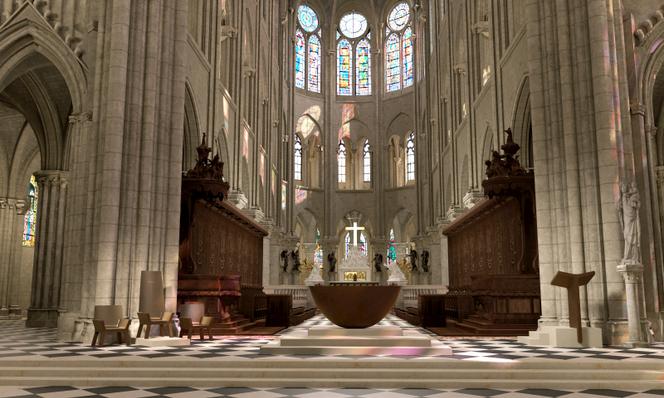


Notre-Dame Cathedral, which is due to reopen on Saturday, December 7, is a great book of stone: To enter its mystery is to learn how to read. From 1163, when construction began, to its opening in 1345, hundreds of anonymous craftspeople worked on it, knowing they would never see the monument completed. They left a symbolic message in the stones for us to read.
Art in the Middle Ages was no mere aesthetic pleasure but an education that opened visitors up to a spiritual reality. A cathedral was a guide destined to transform people. To discover its depth means becoming a pilgrim, for a cathedral is a sacred space. Like an antenna planted in the earth, it conveys the language of heaven.
When you look at Notre-Dame de Paris's facade, you're faced with an enigma. Dozens of statues populate its walls. Is there a link between them? Do they respond to each other from top to bottom? What if all this had a meaning? We want to know. People in the Middle Ages were versed in symbolic language. They saw in a forest's trees a church vault, in the moving sea a sign of the material world in which one could drown, and in the water of springs an element of purification. They understood the language of a cathedral, and its words transformed the visitor's soul.
This language remains within our grasp. The new work, which was essentially a restoration of the site, now invites us to rediscover Notre-Dame's message. Pascal Prunet, one of the architects on the project, spoke with admiration of "the prowess of Middle Ages builders, particularly in raising the vaults, which the current team has endeavored to rebuild identically."
This great monument is vertical: It rises symbolically, pointing in the direction of heaven, calling us to turn our gaze upward. In the Middle Ages, the shape of a church or cathedral was an image of the body of Christ. The nave represents his legs, the entrance doors his pierced feet. The transept (transverse aisle intersecting the main nave at right angles) stands for his outstretched arms. At the far end, the semicircular apse, with its star-shaped chapels, is his head wearing the crown of thorns. As for the choir, it is the sign of his sacred heart.
The soaring vaulted ceilings symbolize a flight toward the heavens, an invitation to detach oneself from the material world. From the entrance, visitors make their way to the choir, the holiest part of the building. To visit a cathedral is to move from shadow to light. The building's orientation is symbolic. The entrance is to the west, where the sun sets, and the choir is to the east, where it rises. The Christian sanctuary, in its architecture and décor, thus embodies a path from darkness to light.
You have 76.38% of this article left to read. The rest is for subscribers only.
